From Tyler Tobolt:

Tri State – USFiR Photography
May 31
Posted by Admin in Fire Truck photos | 9 Comments
From Tyler Tobolt:

Tri State – USFiR Photography
Tags: chicagoareafire.com, Chicagoareafire.com/blog, Hoffman Estates FD Tower 22, Hoffman Estates Fire Department, new fire truck for Hoffman Estates, New tower ladder for Hoffman Estates FD, Pierce Velocity Ascendant tower ladder, Tri State - USFiR Photography.
This from Jeff Rudolph:
05/30/21Round Lake pulled MABAS Box 26-1 to the box level on arrival at 37nW. Big Horn dr. in Hainesville. Crews found heavy fire in 1 unit of a 6 unit townhouse complex spreading to another unit. Master streams knocked down the bulk of the fire, and crews were able to make a stop on any further spread. Jeff Rudolph
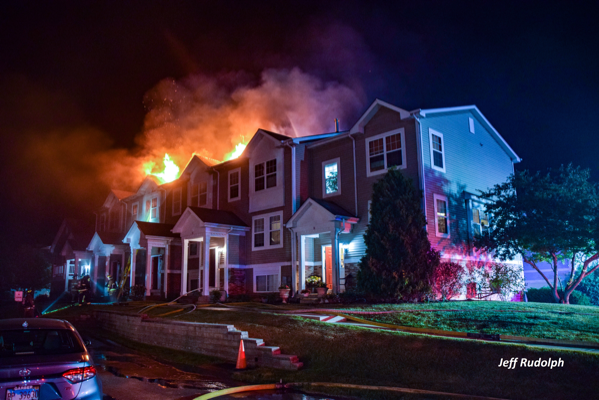
Jeff Rudolph photo
Tags: Firefighters battle fire at night, Firefighters battle fire in a townhouse, Greater Round Lake Fire Protection District, Jeff Rudolph, night fire scene photos, silhouette of firefighters, townhouse fire in Hainesville
May 31
Posted by Admin in Collectors of fire memorabilia | Comments off
From Fire Replicas:
Low Stock Alert: Chicago Seagrave Ladder 32 is getting low!
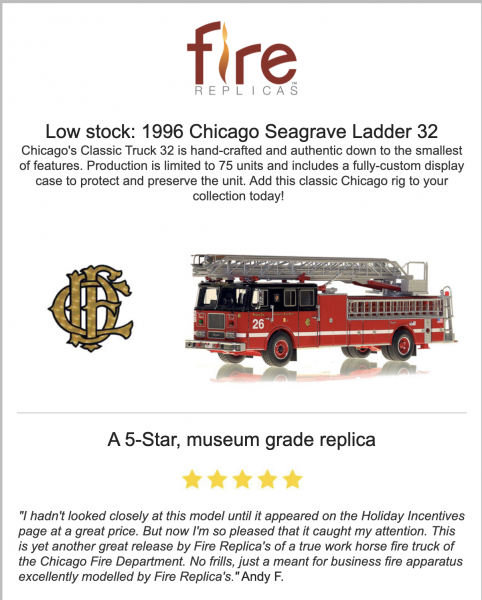
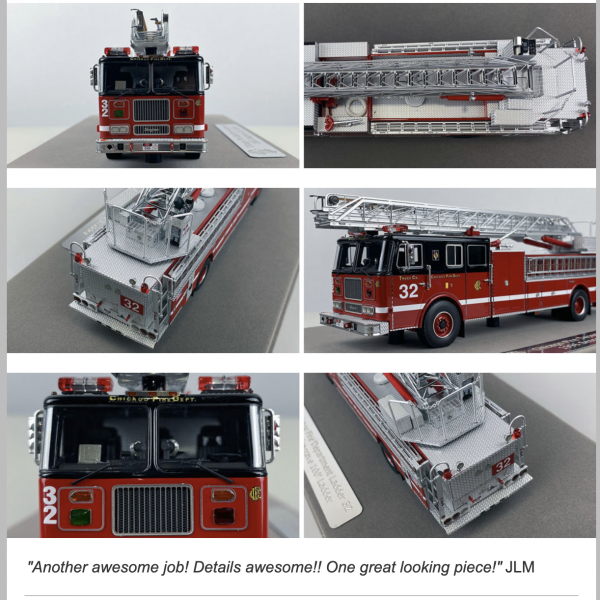
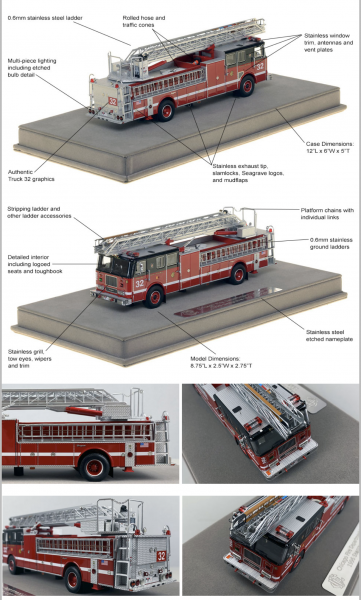
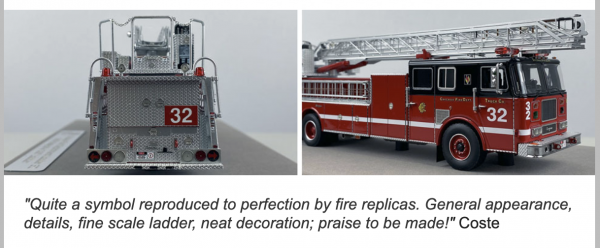
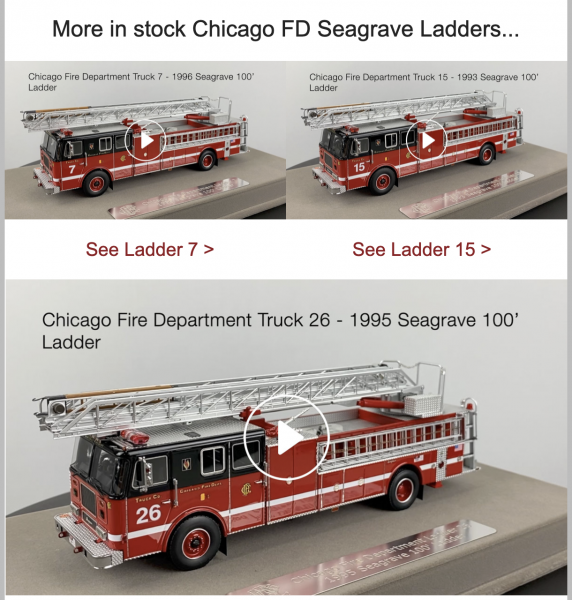
Tags: Chicago FD 1996 Seagrave Ladder 15 replica model, Chicago FD 1996 Seagrave Ladder 26 replica model, Chicago FD 1996 Seagrave Ladder 33 replica model, Chicago FD 1996 Seagrave Ladder 7 replica model, Chicago FD replica models, chicagoareafire.com, Fire Replicas, New Chicago Fire Department replica models
May 30
Posted by Admin in Fire Department History | 1 Comment
From Phil Stenholm:
Another installment about History of Evanston Fire Department
THE SEAGRAVE CONNECTION
The Evanston Fire Department was fully motorized after voters approved a $30,000 bond issue in April 1917 that led to the purchase of five pieces of automobile firefighting apparatus. One Model “E” city service ladder truck — equipped with a rather unwieldy 55-foot ground-based extension-ladder instead of an aerial-ladder, one 750-GPM triple-combination pumper, two chemical & hose 300-GPM booster-pumpers, and one Model “K” front-drive, one-axle truck tractor which motorized the previously horse-drawn American LaFrance Metropolitan steamer, were purchased from the Seagrave Company at a cost of $28,800, and were placed into service over a four-month period November 1917 – March 1918.
The first Seagrave rig to arrive was, as promised, the city service truck, which almost immediately replaced the ex-Chattanooga F. D. LaFrance / Hayes 55-foot HDA that Evanston was leasing from American LaFrance. Seagrave company rep Michael Shafer rode along as the city service truck was shipped by rail from Columbus, Ohio to Evanston during the last week of November, and then Shafer remained in Evanston for the next two months providing driver training, teaching pump operations, and being available in case any of the new rigs might encounter mechanical issues while being placed into service.
The city service truck’s first major fire was one of the ten worst fires in Evanston’s history up until that point in time It was a $30,000 blaze in the early-morning hours of December 30, 1917, at the Evanston Strand Theater at 1560 Sherman Avenue. Two men were seen running from the movie palace a short time prior to the fire being discovered, but arson could not be proven because of the extensive fire & smoke damage. It was the second fire at the Strand in two years. The first occurred on February 13, 1916, and it was clearly accidental, sparked by an electrical short in the orchestra pit, and the EFD was able to knock it down quickly with chemicals. There was minimal damage. Located next-door to the Evanston Police station and around the corner from Fire Station # 1, the Evanston Strand Theater would later be rebuilt as the Valencia Theater, one of three splendid Balaban & Katz movie theaters that operated in Evanston for many years. The others were the Varsity and the Coronet.
The next of the new Seagrave apparatus to arrive were the three pumpers. A 750-GPM triple-combination pumper and two chemical & hose 300-GPM booster pumpers, but not before they were misplaced somewhere on a railroad siding in Chicago for several days in January during the Great Blizzard of ’18. Once they were located and sent onward to Evanston, the rigs had their pumps tested at Becker’s Pond – now known as Boltwood Park – under the supervision of Seagrave’s Michael Shafer and EFD Chief Albert Hofstetter. All three easily passed their pump tests, with the pumps on the two 300-GPM booster-pumpers actually rated at 325 GPM. The three rigs were quickly placed into service. The 750-GPM pumper replaced the Robinson Jumbo as Engine No. 1 at Station # 1, one of the two chemical & hose booster-pumpers replaced the 1902 Seagrave combination truck / hose-tender as Truck No. 2 at Station # 2, and the other chemical & hose booster-pumper replaced the 1885 Davenport H&L / hose tender as Truck No. 3 at Station # 3.
With the exception of the 1906 American LaFrance Metropolitan 700-GPM steamer and its three horses, all remaining horse-drawn apparatus were scrapped and the horses either retired, sold, or transferred to the street department as the new Seagrave automobile pumpers were placed into service in January 1918. On February 21, 1918, the EFD’s last three horses were retired and the horse-drawn American LaFrance Metropolitan steamer was sent to the Seagrave factory to be ‘tractorized‘, with a front-drive, one-axle Model “K” tractor permanently connected to the steamer. The tractorized-steamer was returned to the EFD in March and placed back into service as Engine No. 2 at Station # 2.
Initially, the plan was to overhaul the Robinson Jumbo after the arrival of the Seagrave apparatus. Then it would be kept it in front-line service as Engine No. 3 at Fire Station # 3 with one of the new Seagrave chemical & hose 300-GPM booster pumpers running as the second piece of the company, a rig known in the horse-drawn era prior to 1918 as Truck No. 3. However, due to its history of mechanical problems, the difficulty in locating spare parts, and excessive vibration when operating at full-throttle, Chief Hofstetter decided to remove the Jumbo from front-line duty after only six years of service. It was placed into reserve at Station # 1 as the EFD’s lone reserve automobile apparatus to be known henceforth as Engine No. 4. As a result, the new Seagrave chemical & hose 300-GPM booster pumper that had been assigned to Station # 3 ostensibly as the company’s chemical engine & hose-truck instead became Engine No. 3, and ran as North Evanston’s first-due pumper for the next twenty years!
The Robinson Jumbo was the EFD’s only spare automobile apparatus until August 1929, when it’s pump and chemical tank were disconnected and it was transferred to the street department for use as a utility truck. The street department was still using mostly horse-drawn wagons in the 1920s, so any kind of automobile – even an old fire engine — was a welcome addition to the fleet.
Meanwhile, the tractor-drawn steamer was retired from front-line service and placed into reserve in 1930 after the EFD sent the steamer’s 1917 Seagrave chemical & hose 300-GPM booster pumper back to the Seagrave factory in Ohio to be rebuilt as a 500-GPM triple-combination pumper with a 50-gallon (water) booster tank. The tractor-drawn steamer would remain the EFD’s lone reserve apparatus until 1938, although the Robinson Jumbo was available to be temporarily returned to the EFD from the street department to run as the tractor-drawn steamer’s hose truck anytime the reserve steamer was placed into front-line service.
Evanston’s firefighting force was increased to 41 in 1918, with three, nine-man engine companies and one, 13-man truck company in service. Because Evanston firefighters were working a schedule of 24 hours on / 12 hours off, 2/3 of the manpower was on duty at any one time, so effectively the three engine companies were staffed with six men, and the truck company was staffed with eight or nine, with one man from Truck Co. 1 detailed as the chief’s buggy-driver.
Assistant Chief Thomas Norman retired after 22 years of service with the EFD in 1918, and Capt. Ed Johnson was promoted to assistant chief, Lt. Tom McEnery wqs promoted to captain, and firemen Harry Schaeffer and Ed McEnery (Tom’s brother) were promoted to lieutenant. In addition, Earnest Erickson – the Robinson company engineer who was hired as a temporary civilian motor driver in 1911 and then ended up spending the next six years of his life driving, operating the pump, and repairing (mostly repairing) the Jumbo — was summarily dismissed from the EFD after Engine Co. 1 Assistant Motor Driver Arthur McNeil (finally!) passed the civil service exam for motor driver.
Frank Altenberg – who had been hired as an engineer and assigned to the steamer at Station # 2 in 1916 after William Sampson retired with a disability pension — also was able to qualify as a motor driver and was assigned to Fire Station # 3. Because no Evanston firemen were able to pass the civil service exam for assistant motor driver, Fireman John Monks was appointed temporary assistant motor driver and moved back & forth between Station # 1 and Station # 3 as the relief driver for McNeil and Altenberg.
Unlike Frank Altenberg, none of the other three EFD steamer engineers – J. A. “Dad” Patrick, Max Kraatz, and William Richards – were able to qualify as motor drivers, so all three were assigned to Fire Station # 2, with Patrick the engineer, and Kraatz and Richards the assistant engineers. Besides operating the American LaFrance Metropolitan tractor-drawn steamer (Engine No. 2), the trio were also responsible for maintaining the 1895 Ahrens Metropolitan steamer that was moved to from Station # 3 to Station # 2 and placed into reserve as Engine No. 5.
Motor Engine Co. 1 was reorganized at this time, with Truck Co. 1 under the command of Assistant Chief Ed Johnson and Engine Co. 1 under the command of Captain Tom McEnery once again operating as separate companies at Station #1 as had been the case prior to 1912. Engine Co. 2 under the command of Capt. Carl Harms remained in service at Station #2, and Engine Co. 3 under the command of Capt. George Hargreaves remained in service at Station #3. The assistant company officers were J. E. Mersch (Engine Co. 1), Harry Schaeffer (Truck Co. 1), Ed McEnery (Engine Co. 2), and Pat Gayner (Engine Co. 3).
With automobile apparatus now in service at all three fire stations, and with two separate companies now in service at Station # 1, the EFD’s response to alarms also changed. Instead of Motor Engine Co. 1 responding to all alarms city-wide with one of the two horse-drawn engine companies, Truck Co. 1 now responded to all alarms city-wide, following the first-due engine company, either Engine Co. 1, Engine Co. 2, or Engine Co. 3. The three engine company districts were established as Greenleaf Street to Foster Street (Engine Co. 1), south of Greenleaf Street (Engine Co. 2), and north of Foster Street (Engine Co. 3).
Tags: 1895 Ahrens Metropolitan steamer, 1906 American LaFrance Metropolitan 700-GPM steamer, American-LaFrance Metropolitan steamer, chicagoareafire.com, Chicagoareafire.com/blog, Evanston FD Assistant Chief Ed Johnson, Evanston FD Assistant Chief Thomas Norman, Evanston FD Assistant Motor Driver Arthur McNeil, Evanston FD Captain Ed Johnson, Evanston FD Captain Tom McEnery, Evanston FD Lieutenan Tom McEnery, Evanston Fire Chief Albert Hofstetter, Evanston Fire Department history, Evanston Fireman Ed McEnery, Evanston Fireman Frank Altenberg, Evanston Fireman Harry Schaeffer, Evanston Fireman John Monks, Evanston Strand Theater fire, History of Evanston Fire Departmen, Michael Shafer, Phil Stenholm, Seagrave Fire Apparatus Company, Valencia Theater
May 30
Posted by Admin in Fire Department News, Fire Truck photos, New Delivery | 1 Comment
From Bill Schreiber:
Northwest Homer FPD delivery of their Freightliner/Rosenbauer FX tender. Congratulations and thank you.
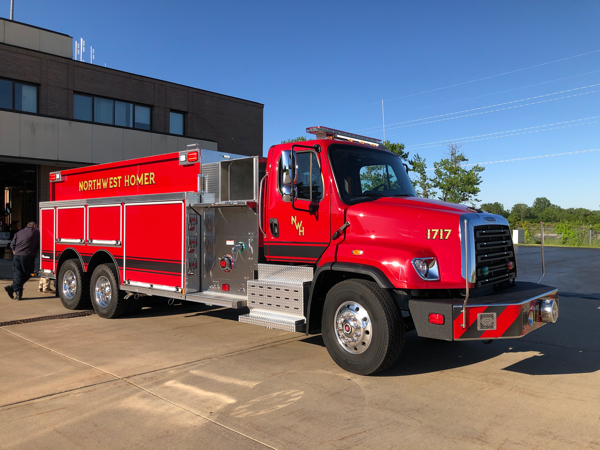
Rosenbauer photo
Tags: chicagoareafire.com, Chicagoareafire.com/blog, Freightliner 114SD chassis for the Northwest Homer FPD tender, new Freightlienr/Rosenbauer tender delivered to the Northwest Homer FPD. Rosenbauer photo, New tanker for Northwest Homer Fire Protection District, Northwest Homer FPD Tender 1717
May 29
Posted by Admin in Fire Department News, fire engine for sale | 13 Comments
From Dieterich Herndobler:
I found this for sale on Brindlee Mountain, Bedford Park Snorkel 705
1997 Pierce Arrow 75′ Snorkel
Truck Type Used Aerials, Ladder Trucks and Quints;Towers and Platforms Manufacturer Pierce Year Built 1997 Mileage 53,864 Location USA – Midwest Stock # 14692 Price $110,000
- Stock#: 14692
- 1997
- Pierce
- Pierce Arrow chassis
- Mileage: 53,864
- Engine Hours: 7,135
- Detroit 6V92TA 450 HP diesel engine
- Engine Brake
- Allison HD4060P automatic transmission
- Waterous CMU 1500 GPM Side-Mount Pump
- Snorkel : 75′ Aerial Device
- Aerial Hours: 1,219.7
- Date of Last Aerial Certification: 11/29/16
- Ground Ladders: 35′, 24′, 16′, 10′
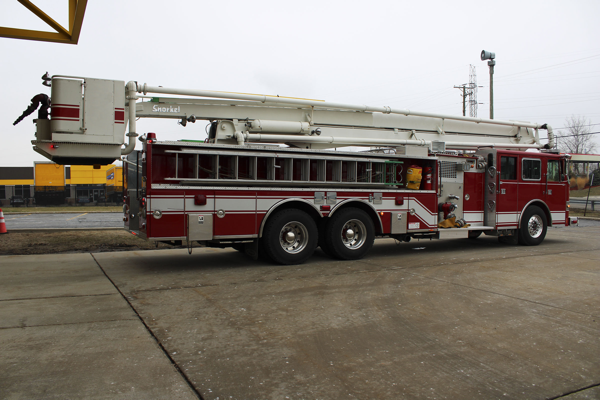
Bedford Park FD photo
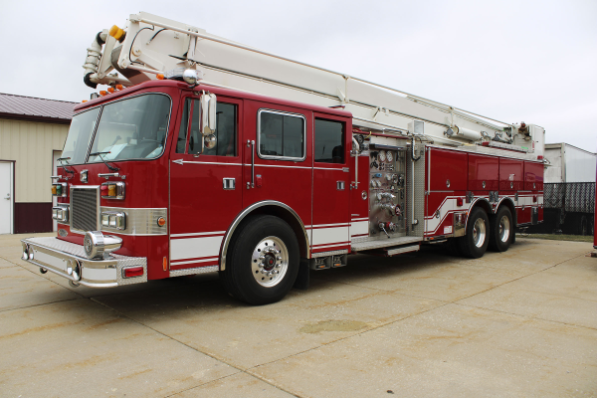
Bedford Park FD photo
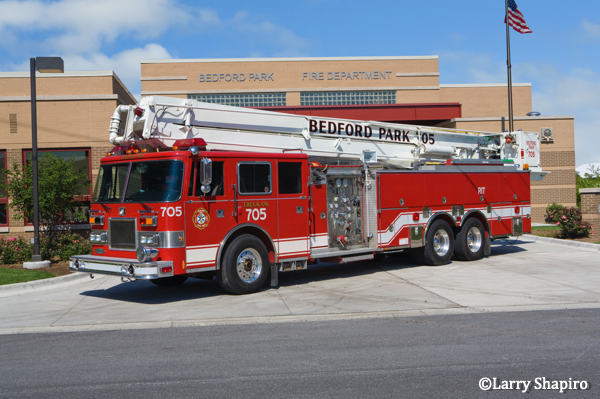
Larry Shapiro photo
Tags: #larryshapiro, 1997 Pierce Arrow 75' Snorkel for sale, Bedford Park FD Snorkel for sale, Bedford park FD Truck 705, Bedford Park Fire Department, fire truck for sale, Larry Shapiro, larryshapiro.tumblr.com, larryshapiroblog.com, shapirophotography.net
May 29
Posted by Admin in Fire Department News, Fire truck being built | Comments off
From Bill Schreiber:
Northwest Homer FPD Rosenbauer Commander rescue pumper chassis update
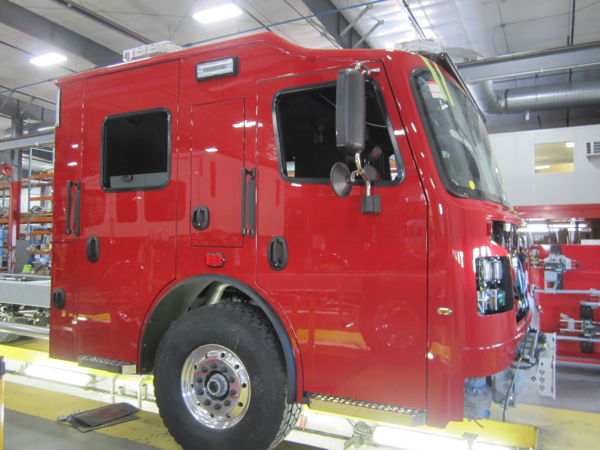
Rosenbauer photo
Tags: chicagoareafire.com, Chicagoareafire.com/blog, new engine for Northwest Homer FPD, Northwest Homer Fire Protection District, Rosenbauer Commander cab being built, Rosenbauer Commander cab on the assembly line, Rosenbauer Commander chassis being built, Rosenbauer Commander chassis on the assembly line, Rosenbauer fire engine being built for the Northwest Homer FPD, Rosenbauer fire truck being built for the Northwest Homer FPD
May 28
Posted by Admin in Fire Department News, Fire Truck photos | 3 Comments
From Max Weingardt:
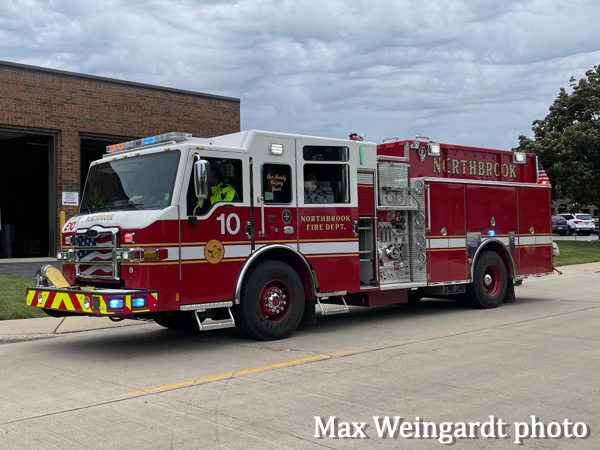
Max Weingardt photo
Tags: chicagoareafire.com, Chicagoareafire.com/blog, Max Weingardt, new engine for Northbrook, Northbrook FD Engine 10, Northbrook Fire Department, Pierce Impel fire engine
May 28
Posted by Admin in Apparatus on-scene, Fire Scene photos | Comments off
From CFD Media on Twitter:
Still and Box with Plan one 5812 north Oriole. 1 story heavy fire load from contents. Two adults transported serious to critical from smoke inhalation. Couple in their 60’s by estimate.
Two adults transported from EMS plan one Still and Box 5812 n Oriole
From Tim Olk:
Chicago Fire Department Still and Box Alarm with an EMS Plan 1 at 5812 N Oriole
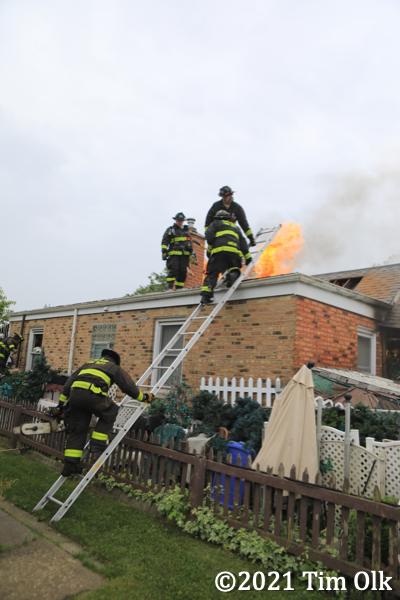
Tim Olk photo
Tags: "Collyer's Mansion" conditions at Chicago house fire, Chicago FD Engine 11, Chicago Fire Department, E-ONE fire engine at fire scene, fire in hoarder house, fire scene photos, house fire in Chicago, Tim Olk, two rescued from Chicago house fire
Excerpts from the DailyHerald.com:
Repairs and upgrades to several Streamwood facilities are part of $4 million in capital projects recently approved by the village board that include work on one fire station, the village hall’s basement restrooms, and two village maintenance garages. Work is expected to begin in the coming weeks. Funds for the project were earmarked as part of multiyear plan to refurbish facilities that began in 2016.
The sanitary sewer system will be upgraded in a fire station that was built in 1991. Work will involve a fair amount of concrete work as the floor must be removed to access pipes.
Renovations will also include some reconfiguration and adding individual bunks plus individual bathrooms. The station currently has one large room to house all firefighters. This will follow the concept of the new Fire Station No. 31 which opened April 1.
The projects are expected to be completed by 2022.
Tags: fire station upgrades, Streamwood Fire Department, Streamwood fire station remodeling and repairs
You are currently browsing the archives for May, 2021

For the finest department portraits and composites contact Tim Olk or Larry Shapiro.
Arclite theme by digitalnature | powered by WordPress